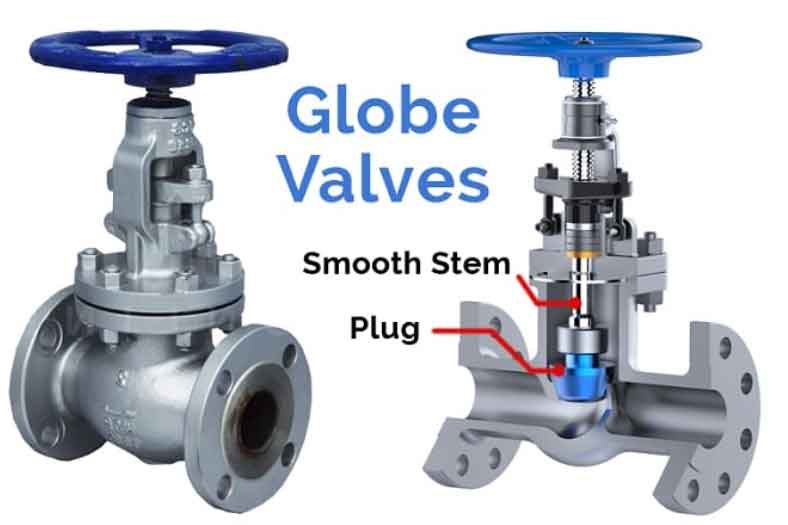Design, operation, and maintenance are crucial aspects to consider when it comes to globe valves. This comprehensive guide will provide an overview of these key aspects:

Design:
Globe valves consist of several components that work together to control fluid flow. The main components include:
- Body: The body houses the internal components of the valve and provides the connection points for the piping system. It is typically designed with a globular shape, giving the valve its name.
- Bonnet: The bonnet is the cover that encloses the stem and disk assembly. It provides a seal to prevent leakage and allows access for maintenance and repairs.
- Disc (Plug): The disc, also known as the plug, is a movable component that controls the flow of fluid through the valve. It is attached to the stem and moves up and down to regulate the flow.
- Seat: The seat is a stationary ring that the disc presses against to create a tight seal when the valve is closed. It ensures a proper shut-off and prevents leakage.
- Stem: The stem connects the handwheel or actuator to the disc. When the stem is rotated or actuated, it moves the disc up and down to control the flow.
Operation:
The operation of a globe valve involves the following steps:
- Opening: To open the valve, the stem is rotated or actuated, causing the disc to move away from the seat. This allows fluid to flow through the valve.
- Flow Control: By adjusting the position of the disc, the flow rate can be controlled. Globe valves offer precise flow control by allowing the disc to modulate the flow according to the desired rate.
- Closing: To close the valve, the stem is rotated or actuated in the opposite direction, causing the disc to move back towards the seat. The disc makes contact with the seat, creating a tight seal and preventing fluid from passing through.
Maintenance:
Proper maintenance is essential to ensure the optimal performance and longevity of globe valves. Here are some key maintenance practices:
- Regular Inspection: Perform regular visual inspections to check for any signs of wear, corrosion, or damage. Inspect the valve body, bonnet, stem, and disc for any abnormalities.
- Lubrication: Apply appropriate lubrication to the stem and other moving parts of the valve to ensure smooth operation and reduce friction.
- Leak Testing: Conduct leak tests periodically to identify any leakage around the valve body, bonnet, or stem. This can be done using methods such as bubble testing or pressure testing.
- Cleaning: Keep the valve and its components clean from any dirt, debris, or contaminants that may affect its operation. Use suitable cleaning agents and methods recommended by the valve manufacturer.
- Repairs and Replacements: Address any identified issues promptly. Replace worn-out or damaged components such as gaskets, seals, or seats as necessary. Seek professional assistance or consult the valve manufacturer for complex repairs.
- Actuator Maintenance: If the valve is actuated, ensure the proper maintenance of the actuator, including checking for proper functioning, lubrication, and calibration.
It is important to refer to the manufacturer’s guidelines and recommendations for specific maintenance procedures and intervals for your globe valve model.
By following proper design considerations, understanding the operation, and conducting regular maintenance, you can ensure that your globe valves operate efficiently, provide accurate flow control, and have an extended service life.
